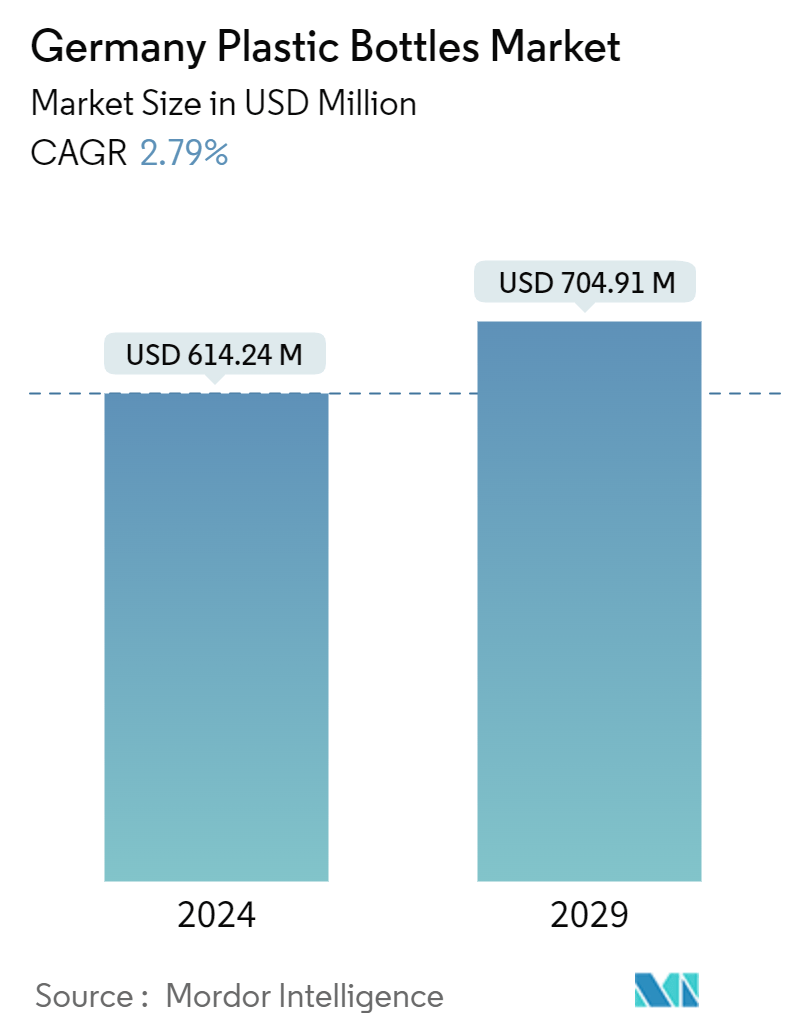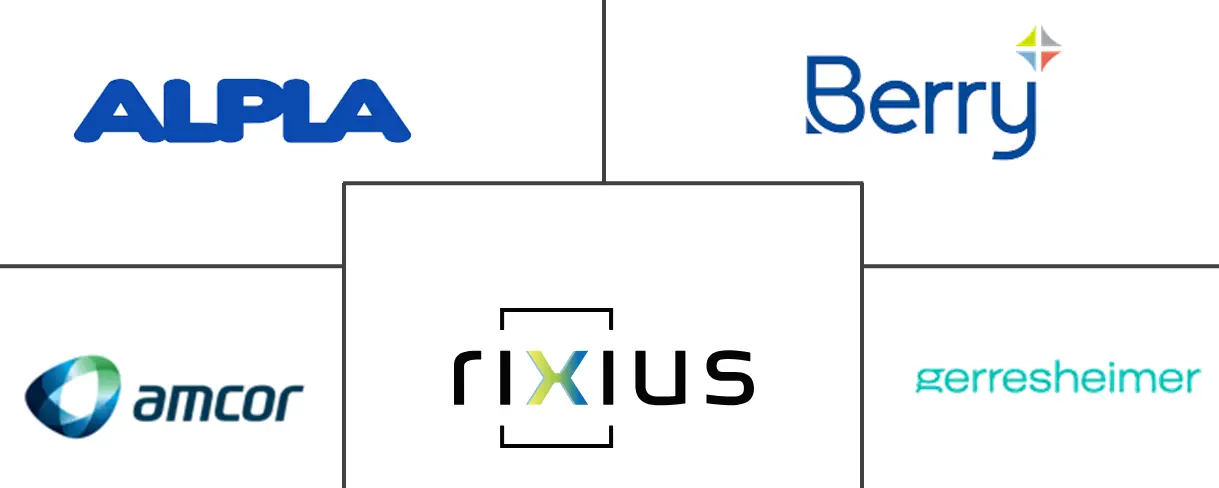Market Size of Germany Plastic Bottles Industry

| Study Period | 2019 - 2029 |
| Base Year For Estimation | 2023 |
| Market Size (2024) | USD 614.24 Million |
| Market Size (2029) | USD 704.91 Million |
| CAGR (2024 - 2029) | 2.79 % |
| Market Concentration | Medium |
Major Players
*Disclaimer: Major Players sorted in no particular order |
Germany Plastic Bottles Market Analysis
The Germany Plastic Bottles Market size is estimated at USD 614.24 million in 2024, and is expected to reach USD 704.91 million by 2029, growing at a CAGR of 2.79% during the forecast period (2024-2029). In terms of production volume, the market is expected to grow from 667.17 thousand tons in 2024 to 762.96 thousand tons by 2029, at a CAGR of 2.72% during the forecast period (2024-2029).
- The plastic bottles market in Germany plays a pivotal role in the country's packaging industry, fueled by demand from industries like beverages, cosmetics, pharmaceuticals, and household products. Valued for their lightweight nature, durability, and versatility, plastic bottles are the go-to choice for diverse applications. The market showcases a variety of plastic materials, including polyethylene terephthalate (PET), high-density polyethylene (HDPE), and polypropylene (PP), each tailored to meet distinct end-user needs.
- PET reigns supreme as the preferred plastic for beverage bottles in Germany, owing to its beneficial features like clarity, strength, and recyclability. Dominating the soft drinks and bottled water segments, PET bottle manufacturers are on a continuous quest for sustainability. Innovations like "lightweighting," trimming bottle weight without sacrificing quality, are pivotal in curbing material usage and transportation emissions. Furthermore, the rising trend of incorporating recycled PET (rPET) is largely fueled by consumer demand and regulatory pushes for better environmental practices.
- High-density polyethylene (HDPE) finds its niche in the German plastic bottle market, predominantly packaging household and personal care items, especially cosmetics. With superior moisture barrier properties and chemical resistance, HDPE bottles cater to a broad spectrum of products. The cosmetics industry emphasizes eye-catching designs without compromising product integrity, spurring innovations like bio-based HDPE from renewable sources and echoing the industry's tilt toward sustainable packaging.
- Germany's pharmaceutical industry leans heavily on plastic bottles, favoring HDPE and PP for their durability and contamination protection. Due to the strict regulations in pharmaceutical packaging, there is a constant drive for innovation to uphold safety and compliance. Features like tamper-evident and child-resistant closures, alongside enhanced barrier properties, are vital to meet the industry's high standards.
- Innovation in Germany's plastic bottle market is not just about materials but also about refining production processes and design. Advanced techniques like blow molding and injection molding are revolutionizing production, allowing for intricate shapes and designs that resonate with consumer preferences and bolster brand distinction.
- In addition to this, Germany's plastic bottle market is pivoting toward sustainability, spurred by consumer consciousness and regulatory mandates. The European Union's push to cut down plastic waste and ramp up recycling is urging manufacturers to explore and invest in eco-friendly avenues. Starting January 1, 2024, Germany introduced a deposit of at least EUR 0.25 (USD 0.28) on plastic bottles for milk products. This change impacts regular milk, beverages with over 50% milk content, and other drinkable items like cocoa, coffee drinks, kefir, and yogurt. Since 2022, nearly all single-use plastic beverage bottles and cans in Germany have been subject to a mandatory deposit.

